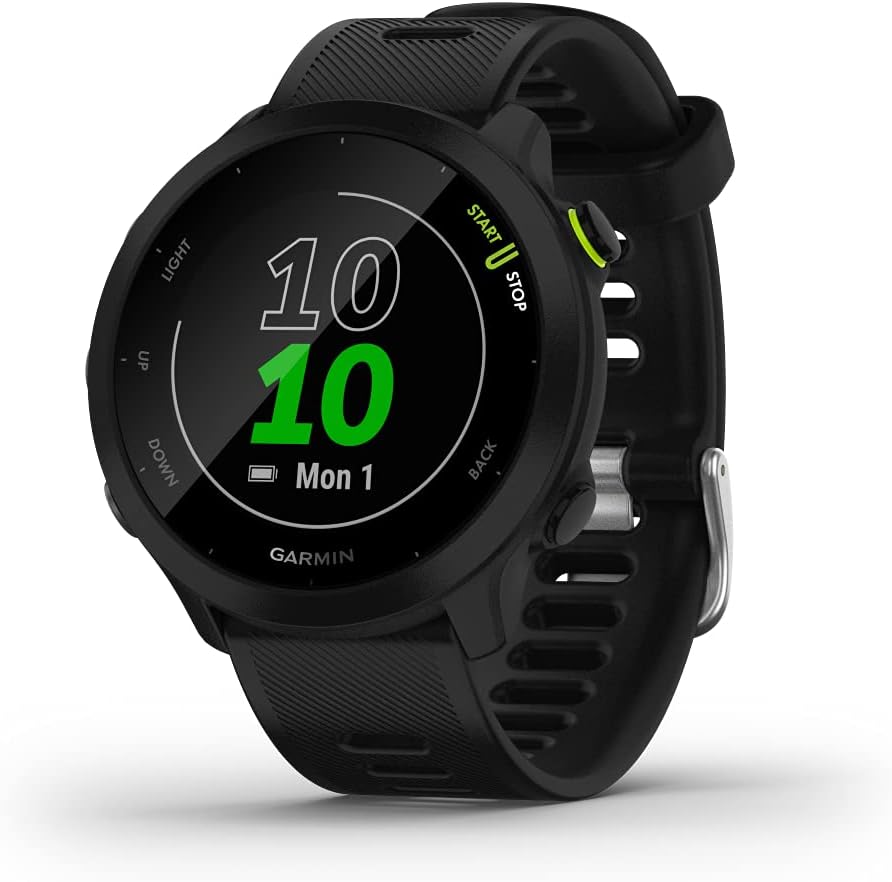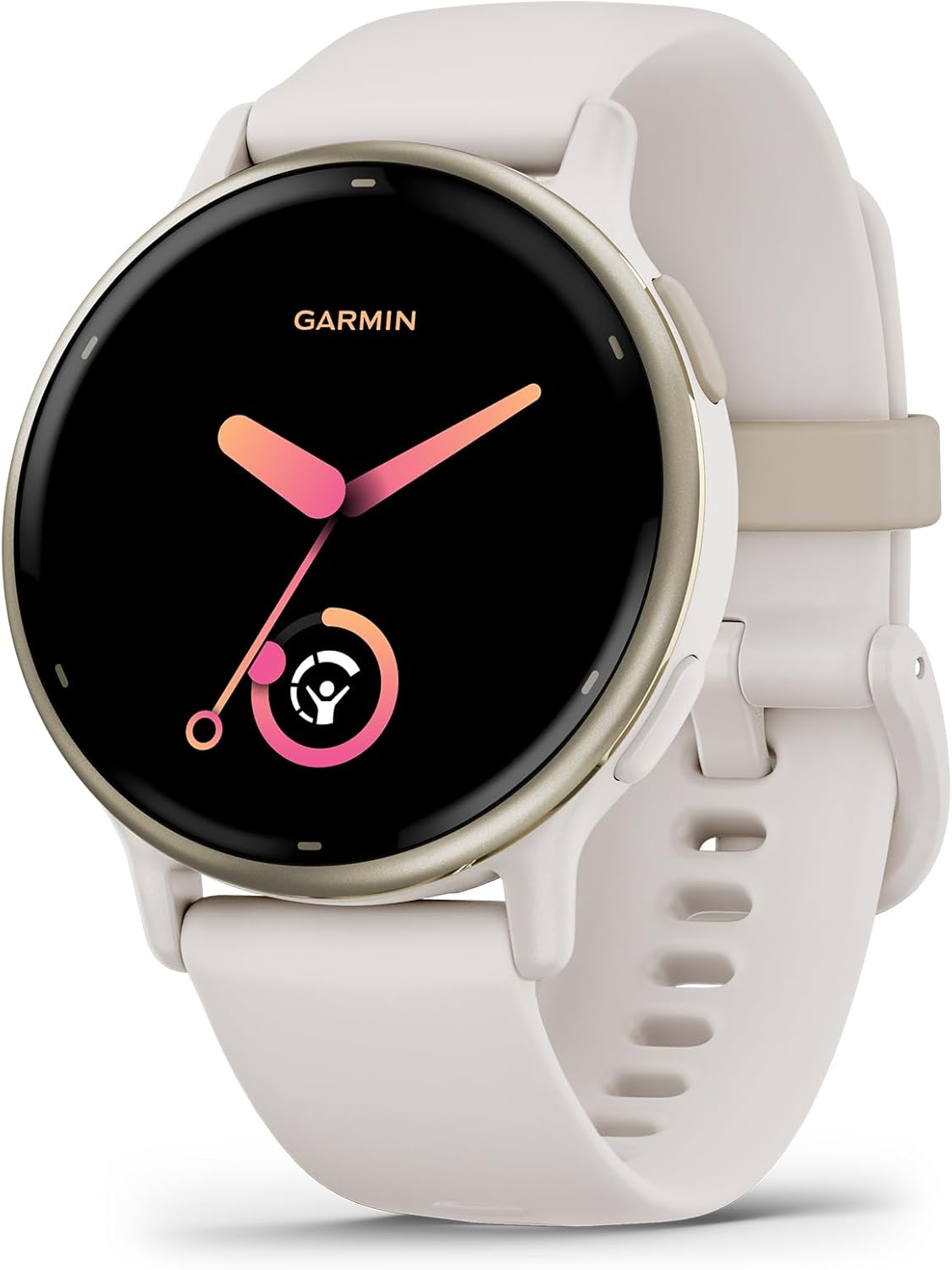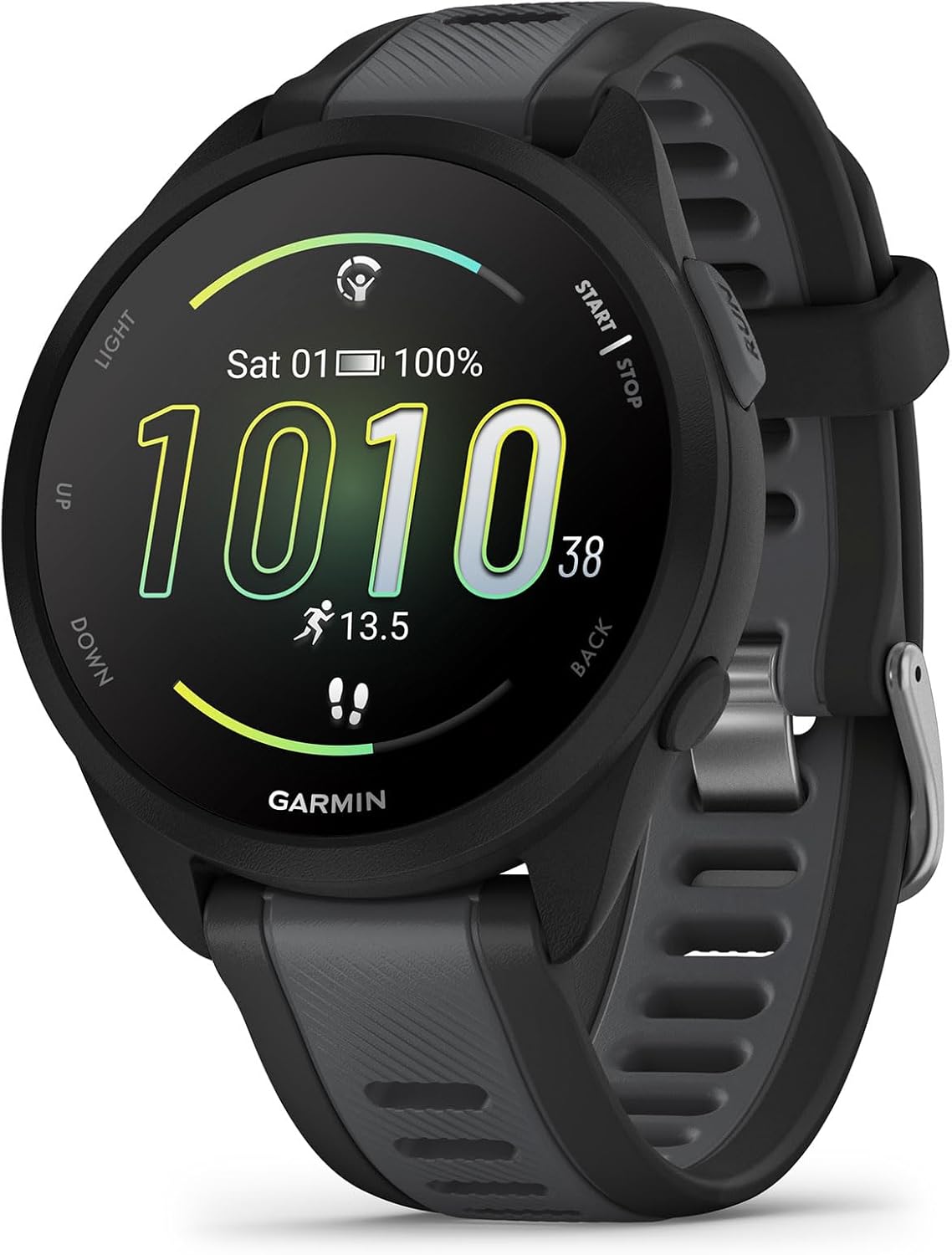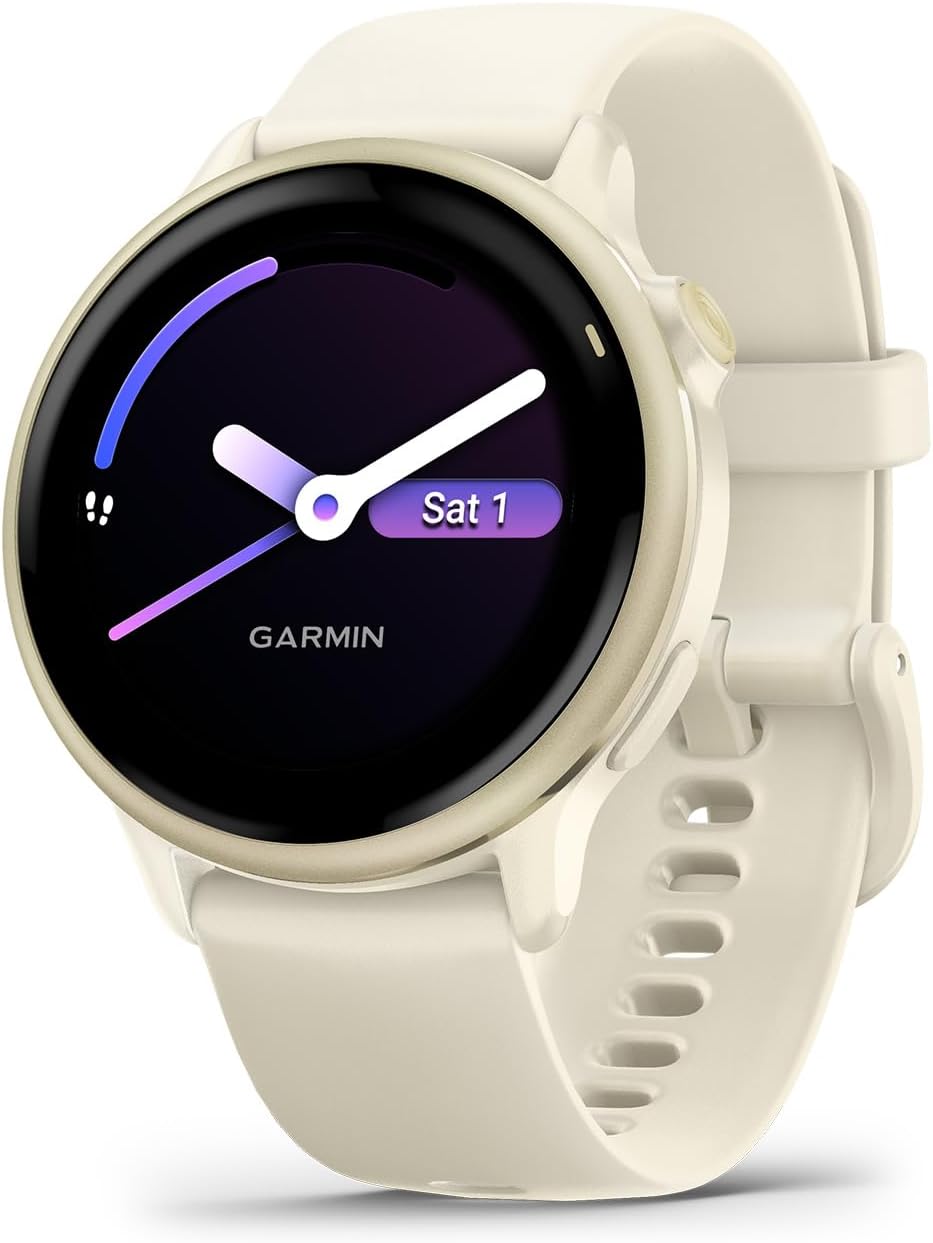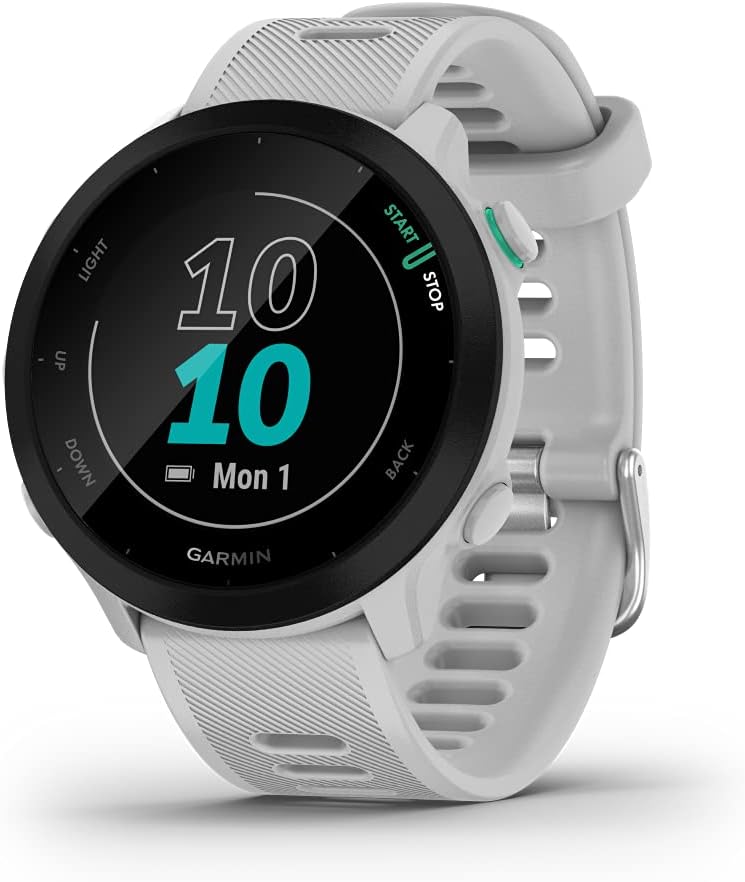Here’s an overview of the Best TOP 5 Garmin Watches | In-Depth that we’ll explore today:
Top Pick
Forerunner 55 |
||
Best Quality
vívoactive 5 |
||
Forerunner 165 |
||
vívoactive® 6 |
||
Forerunner 55 |
Garmin has long been a go-to for runners, climbers, and fitness enthusiasts who demand accurate GPS tracking, robust training tools, and reliable health monitoring. This comparison evaluates five Garmin wearables that span budget to premium, covering core running watches and feature-rich multisport smartwatches. Our methodology combines hands-on testing themes—accuracy of GPS, heart rate stability, battery endurance, and daily usability—with a close reading of specifications like display type (AMOLED vs LCD), onboard storage, sport profiles, and health analytics. We considered real-world usage scenarios: daily wear with notifications, long runs, interval training, multisport workouts, and recovery analytics. The lineup includes two Forerunner running-focused models (Forerunner 55 variants and Forerunner 165) and three multisport options (vívoactive 5 and vívoactive 6), with price points ranging from $169 to $298.99. This spectrum helps illustrate how Garmin balances simplicity, depth, and premium features for different kinds of athletes.
1. Forerunner 55
- Brand: Garmin
- Manufacturer: Garmin
The Forerunner 55 is Garmin’s entry-point running watch designed to simplify training while delivering Garmin’s core running analytics. It pairs wrist-based heart rate, GPS-based pace, distance, and route tracking with daily suggested workouts and PacePro pacing guidance. This model emphasizes watercolor simplicity and reliability, offering up to 2 weeks of smartwatch battery life and up to 20 hours in GPS mode. It supports a broad suite of activity profiles beyond running—cycling, track runs, pool swim, HIIT, Pilates, and more—making it versatile for mixed training weeks. The device integrates with Connect IQ for customizable faces, data fields, and widgets, enabling a personalized experience without overwhelming complexity.
In real-world use, the Forerunner 55 shines as a focused training companion: PacePro provides GPS-based pacing guidance to align with race goals, and the race time/prediction tools help with strategy. The watch also emphasizes wellness metrics like intensity minutes, fitness age, and all-day respiration, offering a practical snapshot of recovery and readiness. However, the trade-off is a relatively modest AMOLED-like experience trade-off (the 55 uses a non-AMOLED display with 1.04-inch size) and a simplified interface that prioritizes essential metrics over deeper lab-grade metrics. For new runners or those who want a budget-friendly Garmin with reliable training scaffolding, it remains a strong value pick.
Pros
- Strong value proposition at $169
- PacePro pacing guidance and race day planning
- Up to 2 weeks of smartwatch battery life
- Wide activity profile support beyond running
- Connect IQ customization options
Cons
- Non-AMOLED display limits color and contrast
- GPS mode runtime (~20 hours) is modest for ultra-distance training
- Lacks music storage and some advanced health metrics found on higher-end models
2. vívoactive 5
- Brand: Garmin
- Manufacturer: Garmin
The vívoactive 5 sits at the intersection of Garmin’s fitness-tracking prowess and consumer smartwatch design, featuring an AMOLED display for richer visuals, more than 30 built-in sports apps, and long battery life up to 11 days in smartwatch mode. It expands health monitoring with Body Battery energy monitoring, sleep score, HRV insights, and automatic nap detection, plus menstrual cycle and pregnancy tracking. Its round form factor, touches on wheelchair mode, and music storage options (supporting downloaded playlists) position it as a versatile daily wearable with competitive health analytics.
Performance-wise, the vívoactive 5 delivers a polished user experience with a colorful, responsive display and a broad sport app catalog, including golf and mobility-focused profiles. The health ecosystem—sleep coaching, stress tracking, and nap insights—gives users a deeper read on daily readiness. On the downside, the feature-set can feel dense for casual wearers who primarily want basic activity tracking, and the smartwatch OS may occasionally blur the line between tracking data and on-watch coaching if you don’t connect to the Garmin Connect app regularly.
Pros
- AMOLED display delivers vibrant visuals
- Body Battery energy monitoring and sleep coaching
- Extensive sport app library and music storage
- Long battery life (up to 11 days)
- Wheelchair mode and accessibility features
Cons
- Heavier feature density may overwhelm casual users
- Garmin Connect ecosystem is essential for full benefits
- Music storage requires compatible streaming services and setup
3. Forerunner 165
- Brand: Garmin
- Manufacturer: Garmin
The Forerunner 165 is a more modern take on Garmin’s running-centric line, delivering a 1.2-inch AMOLED touchscreen, built-in GPS, and a robust set of training tools. It supports Garmin Coach and race adaptive training plans, plus recovery insights and 25+ activity profiles. Its battery life of up to 11 days in smartwatch mode and up to 19 hours in GPS mode makes it suitable for longer training blocks, while safety features and smart notifications broaden its everyday usability. The device emphasizes performance analytics, including training effect metrics and recovery time estimates.
In practice, the 165 balances color-rich visuals with actionable coaching feedback. The on-device training plans adapt to performance and recovery, which is valuable for runners training for events. The inclusion of safety features like incident detection, and Garmin Pay support for contactless payments, adds everyday practicality. While the 165 provides substantial health data and a strong training toolkit, it sits at a higher price point than the base Forerunner 55 and lacks some of the larger feature set (e.g., music on-device storage) seen in higher-end vívoactive models.
Pros
- AMOLED display enhances readability and appeal
- Rich training tools: Garmin Coach, race adaptive plans
- Recovery insights and training effect feedback
- Incident detection and Garmin Pay for safety and convenience
- Long battery life for a premium running watch
Cons
- Higher price than entry-level Forerunner 55
- Music on-device storage is not indicated
- Smaller app ecosystem compared to vívoactive line
4. vívoactive® 6
- Brand: Garmin
- Manufacturer: Garmin
The vívoactive 6 represents Garmin’s premium multisport smartwatch with a high-end AMOLED display, substantial on-board storage (8 GB), and a broad suite of health features including Body Battery, sleep scoring, HRV, and a smart wake alarm. It offers more than 80 built-in sports apps and animated workouts for exercise guidance, along with Garmin Coach adaptive training that personalizes plans based on your health and recovery data. The device is designed for users who want a premium visual experience, extensive health analytics, and a deep training toolbox in a single wearable.
Performance-wise, the vívoactive 6 excels in display quality, user interface fluidity, and depth of training guidance. Animated workouts and 80+ sport profiles cater to enthusiasts who do more than running, including mobility, HIIT, and golf. Battery life remains strong; however, the larger feature set comes with a premium price and slightly larger physical footprint. The Lunar Gold with Bone Band edition emphasizes a premium aesthetic that may appeal to fashion-conscious athletes who still require serious analytics and smartwatch functionality.
Pros
- Premium AMOLED display with high color fidelity
- Extensive health analytics and sleep coaching
- 8 GB memory for music and apps, 80+ sport apps
- Animated workouts and adaptive Garmin Coach plans
- Long battery life with strong overall performance
Cons
- High price point at $298.99
- More feature-dense can be overwhelming for casual users
- Bone Band may require careful maintenance to avoid wear
5. Forerunner 55
- Brand: Garmin
- Manufacturer: Garmin
Experience Forerunner 55. Easy-to-use running watch monitors heart rate (this is not a medical device) at the wrist and uses GPS to track how far, how fast and where you’ve run.Control Method:Application.Special Feature:Bluetooth. Battery life: up to 2 weeks in smartwatch mode; up to 20 hours in GPS mode
Pros
- Easy-to-use running watch monitors heart rate (this is not a medical device) at the wrist and uses GPS to track how far, how fast and where you’ve run.Control Method:Application.Special Feature:Bluetooth.
- Battery life: up to 2 weeks in smartwatch mode; up to 20 hours in GPS mode
- Plan your race day strategy with the PacePro feature (not compatible with on-device courses), which offers GPS-based pace guidance for a selected course or distance
Cons
- May not be suitable for all product users.
- Some users might prefer different features.
Frequently Asked Questions
We’ve compiled answers to the most common questions about garmin watchess to help you make an informed decision.
Conclusion
Final thoughts emphasize that Garmin covers a spectrum from entry-level running-focused devices to premium multisport smartwatches.
For budget-minded runners, the Forerunner 55 provides essential coaching and GPS accuracy. For users seeking broader health insights and on-watch music, vívoactive 5 offers strong value.
For dedicated runners wanting high-end training analytics and safety features, the Forerunner 165 balances price and performance well. For those who want the most complete, feature-rich experience, the vívoactive 6 delivers top-tier visuals, app breadth, and animated workouts, justifying a premium price..
